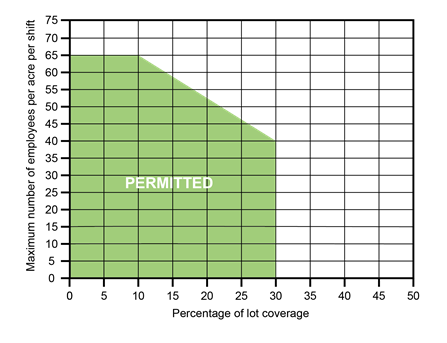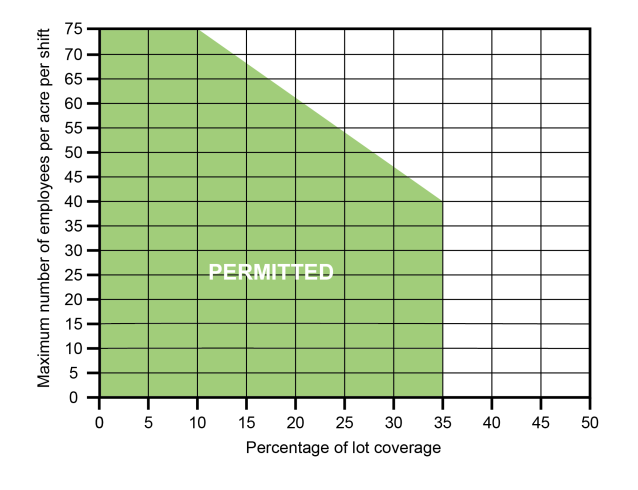2.5.2. ACCIDENT POTENTIAL ZONE DISTRICT (APZ).
A. Purpose. The purpose of the APZ district is to require development around military airport facilities to comply with the regulations of the U.S. Department of Defense, and any other applicable aviation regulations, regarding land uses, building heights, and other factors, to protect the public from hazard impacts of airport operations, minimize exposure to crash hazards generated by military airport operations, promote sound land use planning and zoning practices, and encourage future development compatible with the continued operation of military airports. Uses permitted in this district are as shown in Table 3.2-1 (Permitted Use Table).

B. Cross-References to Other Applicable UDO Sections. All development and redevelopment must comply with all applicable sections of this UDO. A short summary of some of the key sections is shown below.
|
Table 2.5-2 Cross-References to Other Applicable UDO Sections |
|
|---|---|
|
Use Regulations |
Article 146-3 |
|
Dimensional Standards |
Section 146-4.2 |
|
Neighborhood Protection Standards |
Section 146-4.4 |
|
Lot Access and Connectivity |
Section 146-4.5 |
|
Parking, Loading, and Stacking |
Section 146-4.6 |
|
Landscaping, Screening and Stormwater Management (including fence and wall regulations) |
Section 146-4.7 |
|
Building Design Standards |
Section 146-4.8 |
|
Signs |
Section 146-4.10 |
C. Dimensional Standards. The dimensional standards applicable to the Business/Tech (I-1) zone district, as shown in Section 146-4.2 (Dimensional Standards) shall apply in the APZ zone district, except that no building may exceed the maximum height established by FAR Part 77 surfaces for military airports.
D. Other District-Specific Standards. In addition to those General standards in Section 146-2.6.2.B (AIO- Provisions Applicable to All Four Airports), properties in the APZ district shall comply with the following standards. The boundaries of the district and its Subareas shall be determined by scaling distances on the Air Installation Compatible Use Zone (AICUZ) map on file in the Planning Department, which is available on the City’s website and incorporated into this UDO by reference.
1. Clear Zone.
a. Description. The clear zone Subarea is composed of lands in which accident potential is so great that all land uses shall be prohibited, except those necessary for the continued operation of airports and aircraft.
b. Permitted Uses. Only airports and aircraft operations are permitted uses in any clear zone Subarea; provided, that such uses are permitted in the underlying zone district.
2. Accident Potential Zones I and II (APZ I, APZ II).
a. Description. These Subareas are designated to regulate land use and reduce hazards in an area characterized by high noise levels and a significant accident potential resulting from aircraft operations. Residential uses shall be highly restricted.
b. Development Standards. The following development standards shall be used as criteria for evaluating Site Plans in any APZ I or APZ II zone district.
i. APZ I-N(North) Lot Coverage. The maximum lot coverage of structures and buildings within APZ I-N shall be as permitted by the graph in Figure 2.5-1.
ii. APZ I-S(South) Lot Coverage. The maximum lot coverage of structures and buildings within APZ I-S shall be as permitted by the graph in Figure 2.5-2.
iii. APZ II-N(North) Lot Coverage. The maximum lot coverage of structures and buildings within APZ II-N shall be as permitted by the graph in Figure 2.5-3.
iv. APZ II-S(South) Lot Coverage. The maximum lot coverage of structures and buildings within APZ II-S shall be as permitted by the graph in Figure 2.5-4.

Figure 2.5-1: APZ I-N |

Figure 2.5-2: APZ I-S |

Figure 2.5-3: APZ II-N |

Figure 2.5-4: APZ II-S |
v. Crash Corridor. To the maximum extent practicable, the centerline area of the APZ I shall be maintained in an open condition. Structures and human activity, as permitted by this district, shall be placed toward the perimeter of the APZ area.
vi. Emissions. The development shall not:
(a) Release into the air any substance that would impair visibility or otherwise interfere with the operation of the aircraft;
(b) Produce substantial light emissions, either direct or indirect (reflective) that would interfere with pilot vision; or
(c) Produce emissions that would interfere with aircraft communication systems or navigational equipment.
vii. Hazardous Materials. Materials that are explosive, flammable, toxic, corrosive, or otherwise exhibit hazardous characteristics as defined in state regulations are prohibited in any quantity, except that sale or storage of small caliber ammunition is permitted.
viii. Other Prohibitions.
(a) The development shall not:
(i) Have more than 50 residents, users, or visitors per acre on a regular basis, or otherwise violate standards for levels of human occupancy established by the Air Force;
(ii) Involve utilities and services required for area-wide population upon which disruption would have an adverse impact (telephone, gas, etc.);
(iii) Concentrate people who are limited in their ability to respond to emergency situations such as children, elderly, the handicapped; or
(iv) Pose hazards to aircraft operations.
(b) After the Effective Date, no application for a subdivision of land that would increase the number of developable lots or increase the number of residents or users of the property shall be approved. (Ord. No. 2019-49 § 1, 08-19-2019)